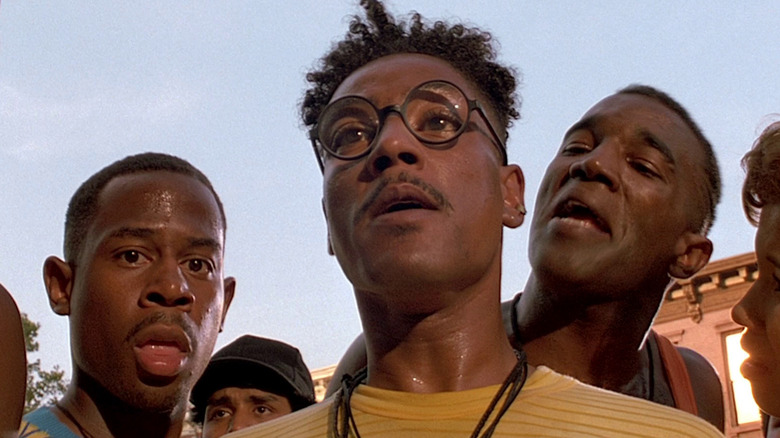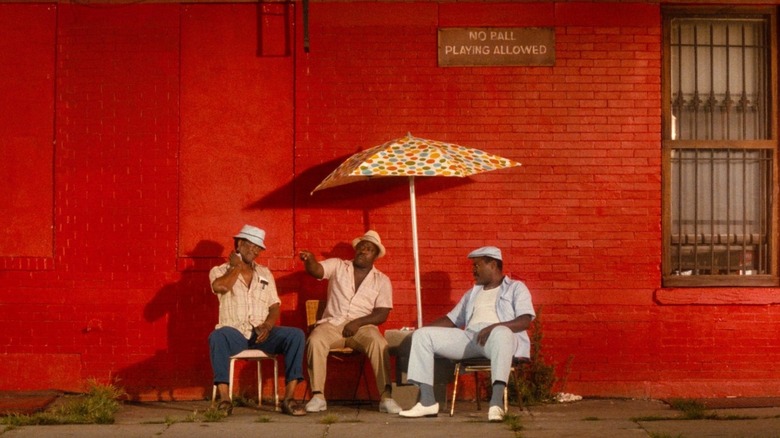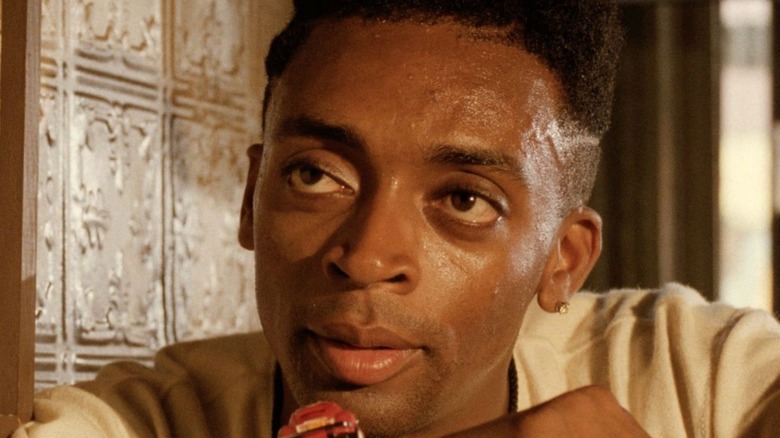Spike Lee's Do The Right Thing Started With A Request On The Set Of School Daze
Once Spike Lee kicked down the door with his 1986 indie sensation "She's Gotta Have It," he made movies at a furious pace, rarely stopping to catch his breath or soak in the moment. The next film was always right on the horizon, ready to go as soon as Lee locked picture on the previous one. What's even more remarkable is that he always found time to direct commercials and music videos in the midst of his filmmaking frenzy. He seems to be slowing down a bit at the age of 65 (i.e. he's gone two years and counting without releasing a feature, and doesn't appear to have one in active production), but I hope it's because he's recharging his batteries for a flurry of activity heading into his 70s and beyond.
Early in his career, when he was generating his own material, it wasn't unheard of for Lee to write the script for his next film while in production on his latest effort. According to cinematographer Ernest Dickerson, this is exactly what happened with 1989's "Do the Right Thing." That Lee could split his focus while mounting his first studio movie with 1988's "School Daze" –- and a boisterous musical at that –- is remarkable. But the man has a ceaseless imagination, and likely knows that great ideas have a tendency to slip away if you don't hop on them immediately.
Conjuring the look of heat
Speaking with The Guardian in 2014, Ernest Dickerson said Spike Lee told him he was writing a screenplay called "Heatwave" (prior to it being retitled "Do the Right Thing") during production on "School Daze." It was to be a racially-charged drama set in a Brooklyn neighborhood on the hottest day of summer, so Lee asked the cinematographer to think about ways to convey heat visually to the audience. Per Dickerson:
"The first thing I came up with was the use of color. I did a lot of research on its psychology and worked on a controlled palette that pretty much stayed in the warm range –- yellows, reds, earth tones, ambers –- and tried to stay away from blues and greens, which have a cooling effect."
This was easy enough. The real difficulty would be shooting a movie that takes place in one day over an eight-week period. This required the production to be flexible in terms of the weather, because, given their tight budget, they did not have the luxury to go a day without filming. Lee and Dickerson came up with an ingenious solution, as the latter explained:
"We looked for a street that ran north-south. Since the sun travels east to west, one side would always be in shade. That way, when we had to shoot on cloudy days, I could just make it look like we were in the shaded side of the street. That really saved us, because the first two weeks we had a lot of rain. Some shots where it looks sunny –- you can actually see rain if you look really hard."
Dickerson is one of our visual masters, regardless of what the Academy says
I've watched "Do the Right Thing" many, many times. I've studied it shot by shot. I've never seen a drop of rain in a single frame. This is a testament to Ernest Dickerson's skill –- and a mark of shame for the Academy Awards, which has never nominated him for Best Cinematography (ditto the American Society of Cinematographers).
Dickerson keeps busy as a television director nowadays (having called the shots on episodes of "The Walking Dead," "Bosch," "Godfather of Harlem," and "House of Cards," among many other TV shows of note), and hasn't lensed a theatrical film since 1992's "Malcolm X," so it's unlikely the Academy will ever right this egregious wrong. But cinephiles will always be able to savor his painterly genius on Spike Lee's early classics, and that, in the words of Mister Senor Love Daddy, is the double truth, Ruth!


